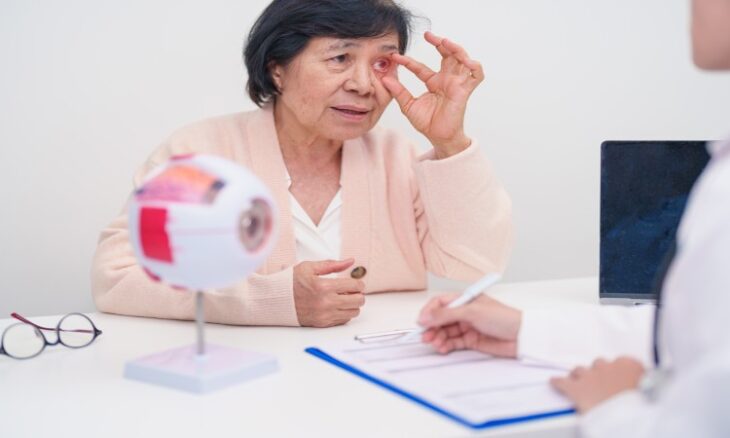Groundbreaking Microchip Helps Blind Patients Regain Vision
A pioneering medical trial has given hope to people suffering from severe vision loss caused by dry age-related macular degeneration (AMD), a common and irreversible condition that affects the retina. For the first time, a group of patients previously considered permanently blind has regained partial sight through the use of an innovative electronic eye implant paired with augmented reality (AR) glasses.
Dry AMD gradually damages the macula, the central part of the retina responsible for sharp vision, leading to geographic atrophy, an advanced stage of the disease. Around one million people in the United States alone are estimated to be affected by this condition. Traditional treatments have been able to slow the progression of AMD but have never succeeded in restoring sight that had already been lost. The recent breakthrough, however, has changed that narrative.
At the centre of this innovation is the photovoltaic retina implant microarray, also known as the PRIMA system. This technology features a wireless, ultra-thin microchip that contains 378 photovoltaic cells designed to replace the light-detecting functions of damaged rod and cone cells. The microchip effectively acts as an artificial retina, converting light signals into electrical impulses that can be interpreted by the brain.
The surgical procedure to implant the chip takes less than two hours. During the operation, the chip is placed beneath the macula, and after implantation, the eye requires several weeks to adjust before activation. Once ready, patients receive a portable computer and a pair of AR glasses equipped with a miniature camera and an infrared projector.
The system functions by capturing the visual environment through the camera, which then transmits the data to the pocket-sized computer. The computer translates the information into a specific infrared light pattern that is projected back into the eye. When this light reaches the implanted chip, it is transformed into an electrical signal that stimulates the surviving neurons in the retina. The brain interprets these signals as visual input, enabling the individual to perceive images once again.
Participants in the European clinical trial spent several months training their brains to adapt to the new form of visual information. Many of them, who previously had no central vision, gradually began identifying shapes, letters, and even words. Out of the 38 participants who had lost their central vision in at least one eye, 84% regained the ability to read text, numbers, and multiple lines on a vision chart.
Some of the participants described being able to read product labels, complete crosswords, and even recognise letters on screens, experiences they had lost for years. In one instance, a participant in France reportedly managed to navigate the Paris metro independently, a remarkable demonstration of regained functional sight.
The study, conducted by teams from institutions including Moorfields Eye Hospital in London and the University College London Institute of Ophthalmology, marks a significant step forward in the field of visual prosthetics. The findings were published in the New England Journal of Medicine, one of the world’s most respected medical journals.
According to researchers, the results highlight not only the potential of artificial vision systems but also the brain’s extraordinary ability to adapt and interpret new sensory information. The achievement has been hailed as the beginning of a new era in ophthalmic science, especially for elderly patients who have long been told that their vision loss was permanent.
Before the trial, many of these patients were unable to read, write, or recognise faces. Some could not even detect light or see the eye chart used in vision tests. Following implantation, they were able to identify letters and words, restoring a degree of independence and emotional well-being that had previously been unimaginable.
The success of the PRIMA system demonstrates the growing potential of combining biotechnology, microelectronics, and augmented reality to address complex medical challenges. While further trials and refinements are expected, researchers believe this development could pave the way for future treatments that help restore functional vision in people affected by other forms of retinal disease.
This groundbreaking advancement offers new optimism for millions around the world facing blindness due to degenerative eye conditions. For those once living in darkness, the return of sight, even partially, represents not just a medical success but a profound shift in what is now possible in the restoration of human vision.










